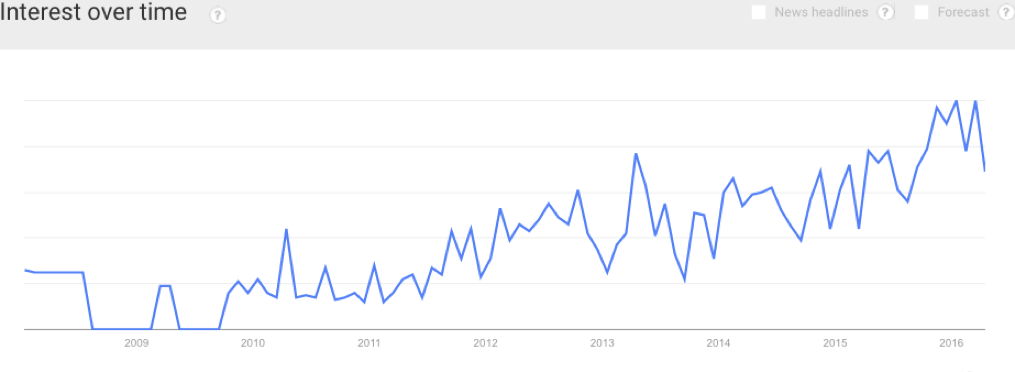The digicomms blog: our most compelling content
The digicomms blog – what you’re reading right now – has been active since 2013. Since then, the team has published over 250 articles which have amassed around 14,000 views. Recently I compiled a short report detailing some key stats and the most popular articles. The data below is from June 2014 to May 2016.
Key statistics
- Total blog posts: 265
- Overall views for the blog: 14,263
- Highest number of views on one day: 183
- Average views per day:
- 2014: 2
- 2015: 19 (+850%)
- 2016: 45 (+137%)
- Most popular topics: University web design, Agile, web design, digital communications (including digital transformation), social media.
The table above shows the overall views from June 2014 to May 2016. The spike in May 2015 is likely due to the ‘Launch of new University home page’ blog post, which is the most popular post to date.
Popular posts
The following table shows the most popular posts on the blog of all time:
Why are these blog posts popular?
There are many factors which play a part in the popularity of a blog post. Some of the posts listed above are niche topics, and one (Launch of new University home page) relates specifically to people at the University. The digital communications team’s interest in Agile has also increased the popularity of posts relating to Agile practices.
As well as niche content, there are many ‘hot-button’ topics such as new social media platforms addressed in blog posts. It is likely that there is a higher chance for these topics to be searched for, discussed and shared. Google Trends can highlight the popularity of different topics, such as snapchat, which we wrote a post about quite recently:
With more and more celebrities, prominent figures and institutions using Snapchat, this trend is likely to continue. The same is also seen with Agile project management:
Many of the most popular posts share common traits which could also be responsible for their popularity. For example the popular blog posts contain the following features:
- Organised and formatted text (e.g. headings, emboldening)
- Explains the what, why and how of the topic
- Relevant examples of topics discussed
- Links to external and internal content
- Images
- Frequent use of keywords
- Content marketing friendly: for example, posts are filled with questions users may search for. Our post ‘Hero banners: why are they so attractive?’ includes:
- “What is a hero banner?”
- “Why is a hero banner better than a rotating carousel?”
There are also some general factors which increase the blog’s overall popularity:
- The frequency and consistency of posts
- Referrals from personal blogs, LinkedIn, etc.
- Developed and relevant posts (due to established house style and quality assurance)
- Straightforward and SEO-friendly titles
Our blogposts including:
- Reduce the file size of PDF documents
- Fixing broken links using Siteimprove
- Writing for digital vs writing for print
- Carousels: advantages and disadvantages
appear high in the rankings in Google search and so have higher pageviews. This is most likely due to the straightforward nature of the titles, and the content within the posts which is inline with content marketing standards. This is supported by the Content Marketing Institute which defines content marketing as:
“a strategic marketing approach focused on creating and distributing valuable, relevant, and consistent content to attract and retain a clearly-defined audience.”
Hopefully, understanding which posts are popular – both with colleagues in the University and with external users who find our blog – will help us create more content which is useful, valuable and relevant as we move forward!


